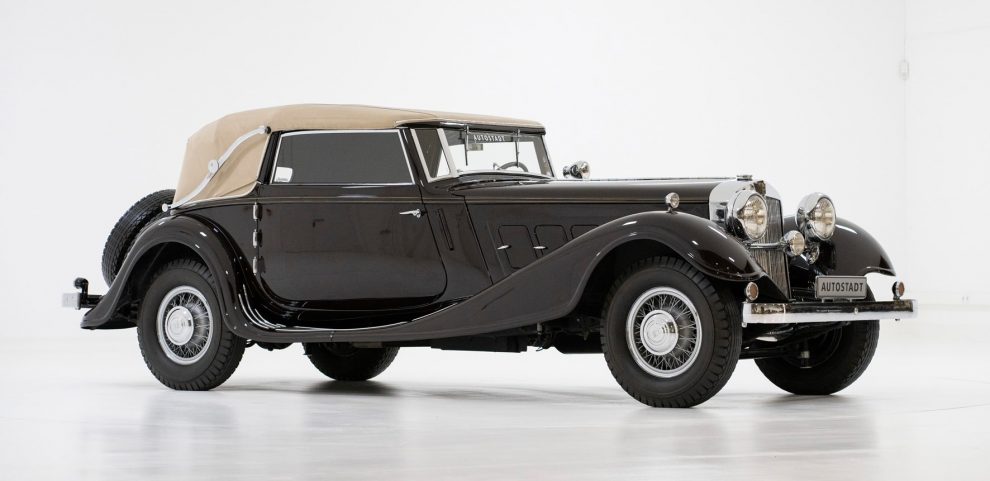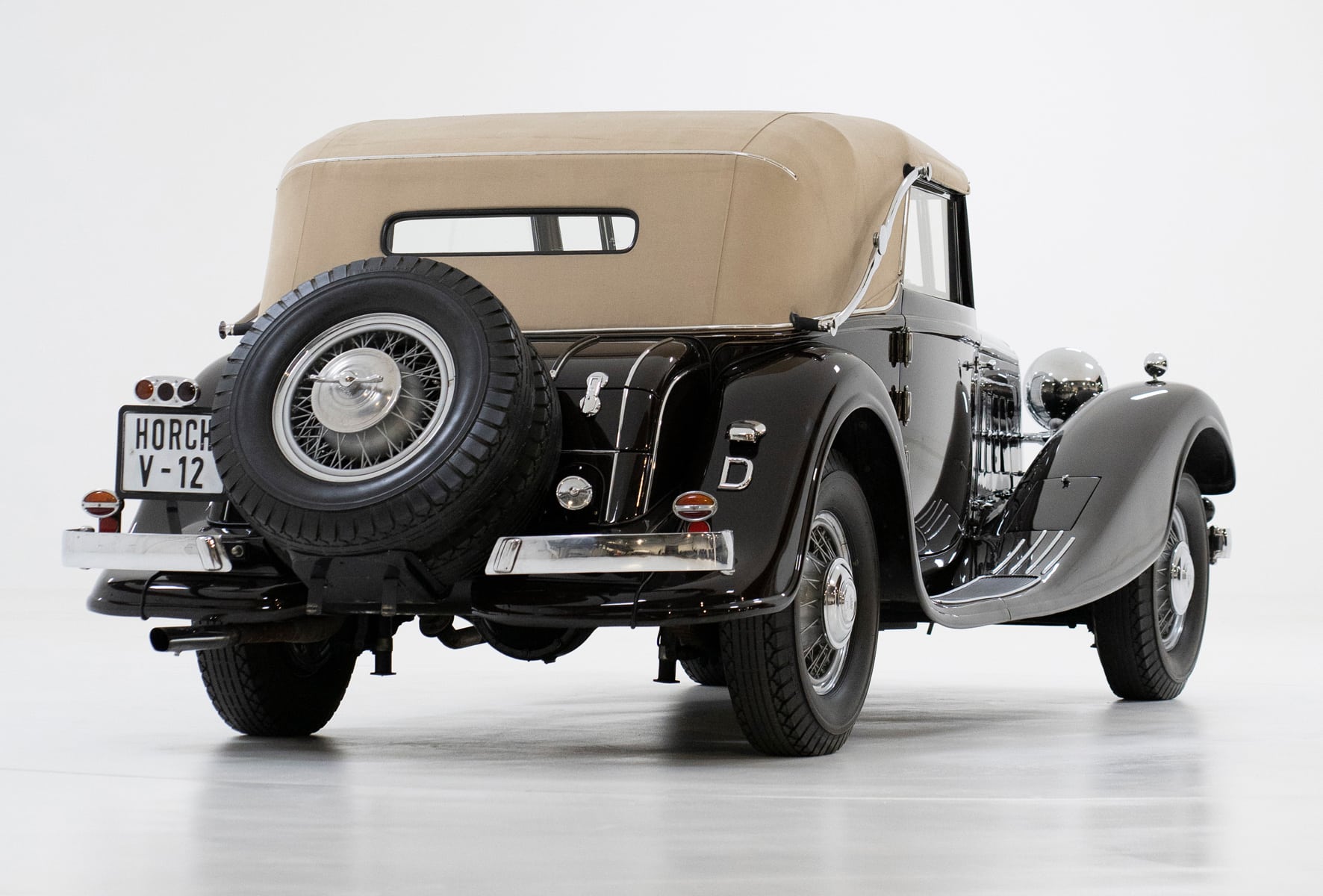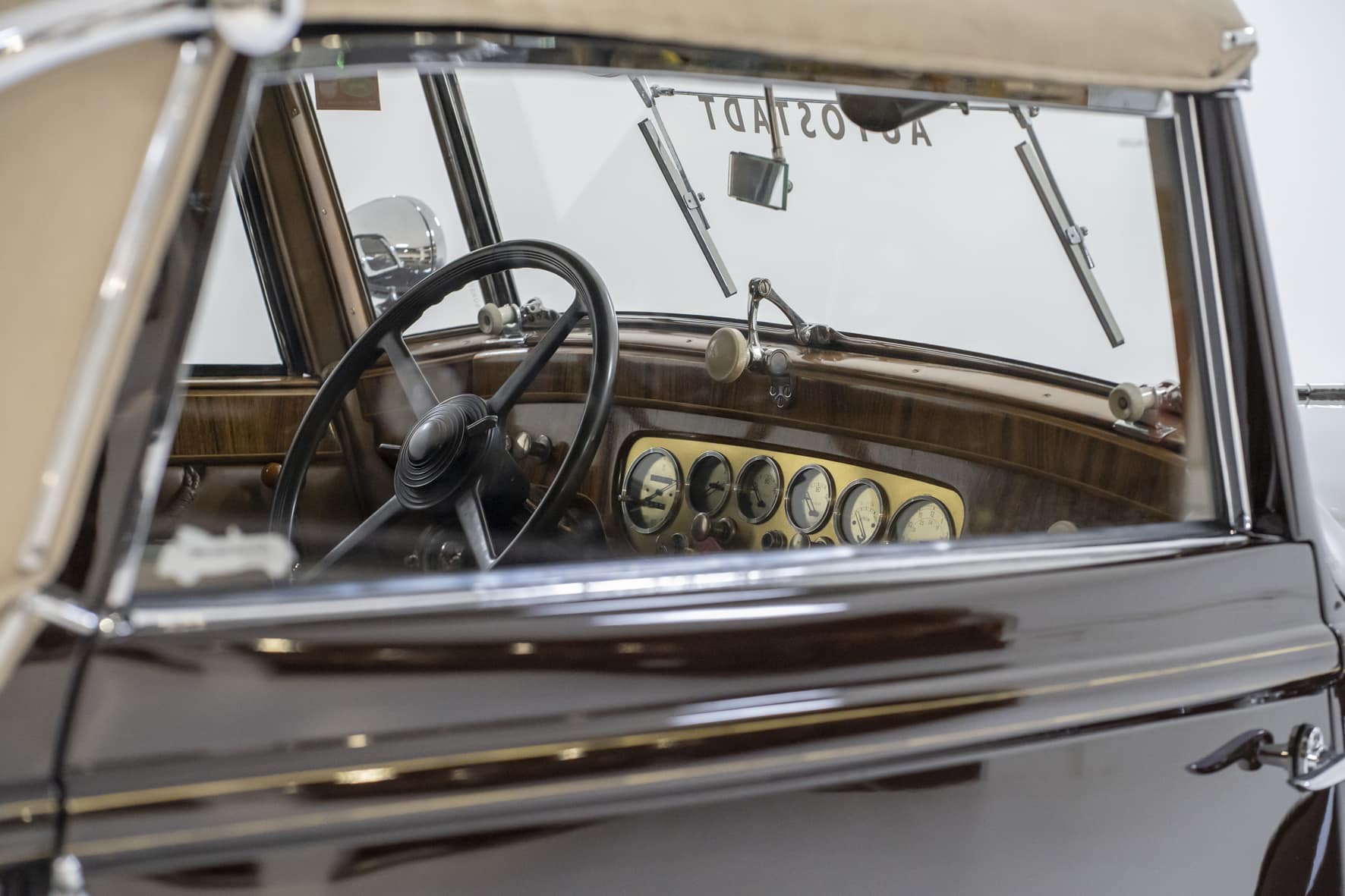Horch: The first owner was a Swiss
ECONOMY CHALLENGE When the Horch 670 V was launched in 1931, it was considered the most revolutionary vehicle of its time. Now it is celebrating its 90th anniversary. Four of a total of 80 vehicles produced are still in existence today. With the Horch 670 V, its owners acquired several unique technical innovations in the 1930s. For example, the car designed by Fritz [...]

With the Horch 670 V, its owners acquired several unique technical innovations in the 1930s. For example, the V12 engine designed by Fritz Fiedler and equipped with hydraulic valve lash adjustment had a displacement of 5990 cm3 and a maximum output of 120 hp at 3000 rpm.
In addition, a fully synchronized transmission was installed in the 670 V. The top speed was 145 km/h, and braking was provided by a four-wheel servo brake system from Bosch.
Access to the trunk is possible through two fold-down spare wheels. In the event of a flat tire, the vehicle weighing just under 2.5 tons could be lifted with a hydraulic jack to change the wheel.
Production was stopped in 1934
Due to the price of 23,500 Reichsmarks (equivalent to about 42,300 Swiss francs), only a few people could afford this vehicle, so production was discontinued again in 1934. Only 80 units were produced in three years.
The first owner of the Horch 670 V, which is now in the Autostadt in Wolfsburg, was Swiss. After the end of the war, the car ended up in the USA. It was not until the 1980s that it was re-imported to Germany and completely restored on behalf of a Munich doctor.
Auto-Union with Audi, DKW and Wanderer
In 1932, Horchwerke merged with Audi, DKW and Wanderer to form Auto-Union. Each of the four brands was assigned its own market segment: DKW motorcycles and small cars, Wanderer mid-range cars, Audi vehicles in the upper mid-range segment, and Horch luxury automobiles.












